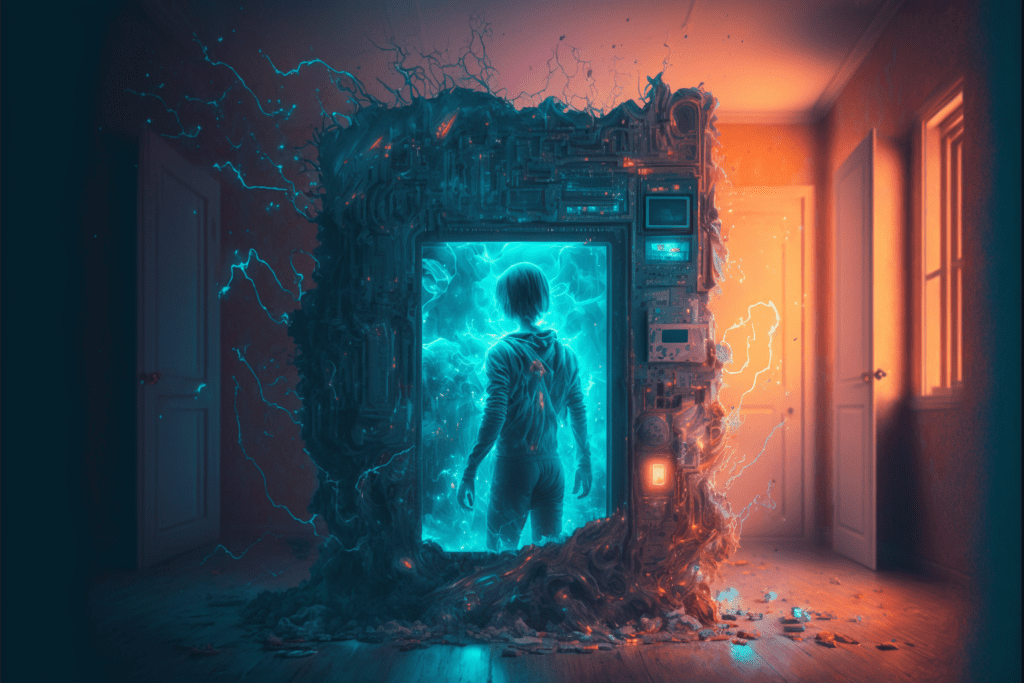
Augmented reality is quickly becoming one of the hottest trends in marketing. A 2018 Deloitte report found that almost 90% of companies with annual revenues of over $100 million
While in smaller firms only 10 percent of marketers use augmented reality but importantly, 72% are planning to in the coming year. This trend is evident across numerous sectors, however, the potential for Augmented Reality to have a positive impact in the marketing sphere is huge and there are already a number of successful use cases where the use of this technology has had a direct impact on driving user engagement.
In this blog piece we will explore what Augmented Reality is, its current applications and its potential to change the marketing function looking into the future. AR is being recognised more and more as an innovative and creative way of connecting with customers and increasing engagement. While the basic technology has existed for years, it has significantly grown in popularity in recent times and this trend shows no signs of abating.
 Augmented reality is a technology that provides an interactive experience where the objects that reside in the real-world are enhanced by computer-generated perceptual information, across multiple senses including visual, auditory and touch. An easy to conceptualise example of Augmented Reality is the popular Pokémon GO phone application that allows users to visit real-world locations to capture computer-generated exotic monsters.
Augmented reality is a technology that provides an interactive experience where the objects that reside in the real-world are enhanced by computer-generated perceptual information, across multiple senses including visual, auditory and touch. An easy to conceptualise example of Augmented Reality is the popular Pokémon GO phone application that allows users to visit real-world locations to capture computer-generated exotic monsters.
Augmented reality uses the existing real-world environment and puts virtual information on top of it to enhance the user experience. Conversely, virtual reality involves users inhabiting an entirely different virtual environment altogether. While both are exciting technologies, the capabilities of Augmented Reality technology to put products in the consumers in a real world environment has more practical applications for marketers at present.
Augmented reality technology is continually developing and becoming more pervasive among a wide range of applications. Since its conception, marketers and technology firms have had to battle the perception that augmented reality is little more than a marketing tool. However, consumers are beginning to derive tangible benefits from this functionality and expect AR to be included as part of their purchasing process. For example, some early adopters in the retail sector have developed technologies designed to enhance the shopping experience by incorporating augmented reality to let consumers visualise how different products look in different environments. These statements are backed up by the fact that about 63% of customers believe that augmented reality will add great value to their shopping experience. A few of the ways AR technology can improve the customer experience include; three-dimensional thinking, gamification, creating live experiences and social media applications.
Augmented Reality opens up a wide new range of possibilities in the third dimension. One such example of where operating in the third dimension can significantly improve the customer experience is the potential to complement AR experiences with advertising. Where viewers could once only see ads directly ahead of them, they can now view display ads in their peripheral vision.
 AR delivers the possibility of creating a more immersive platform which incorporates game-like features and brings the consumer into the experience. By connecting to customers with the brand story and enjoyable experiences, companies can show value through engagement and brand affinity as one of the core theories associated with gamification is that if you make something fun, customers are more likely to use it.
AR delivers the possibility of creating a more immersive platform which incorporates game-like features and brings the consumer into the experience. By connecting to customers with the brand story and enjoyable experiences, companies can show value through engagement and brand affinity as one of the core theories associated with gamification is that if you make something fun, customers are more likely to use it.
 Augmented reality allows marketers the opportunity to create unique experiences for customers such as creating virtual tours in store can add an element of fun while allowing buyers to learn more about products or services. According to a survey conducted by think mobile, the likelihood of a successful online sales conversion is about 40% if a consumer is able to view the product in AR. Furthermore, the AR industry is expecting to see revenue growth of €106 billion by 2020 as technological infrastructure begins to expand globally.
Augmented reality allows marketers the opportunity to create unique experiences for customers such as creating virtual tours in store can add an element of fun while allowing buyers to learn more about products or services. According to a survey conducted by think mobile, the likelihood of a successful online sales conversion is about 40% if a consumer is able to view the product in AR. Furthermore, the AR industry is expecting to see revenue growth of €106 billion by 2020 as technological infrastructure begins to expand globally.
 Adding creative filters, animations, and interactions to everyday objects or products, while correlating to your brand values, can improve the customer experience on social media and help to create a positive perception of your brand. Company’s who partner with Snapchat as part of a larger campaign by creating filters can generate a lot of buzz around their brand. The great thing about AR is how it augments real life without taking away from what people are experiencing and has the potential to extend live experiences in a way that feels enriching and authentic.
Adding creative filters, animations, and interactions to everyday objects or products, while correlating to your brand values, can improve the customer experience on social media and help to create a positive perception of your brand. Company’s who partner with Snapchat as part of a larger campaign by creating filters can generate a lot of buzz around their brand. The great thing about AR is how it augments real life without taking away from what people are experiencing and has the potential to extend live experiences in a way that feels enriching and authentic.
Despite the fact that AR has been used in limited cases such as in sports for years, at present, it is still an emerging technology, and consumers are more likely to remember an AR-focused campaign because of the limited number of brands developing them. When AR is mentioned, most people think of a few specific examples of Augmented Reality such as the Pokemon Go app which temporarily took the world by storm. The novelty associated with AR means that if a firm can come up with an interesting and engaging application for AR to supplement their brand image, they can create a differentiated level of value for their company.
Before launching an augmented reality application, it is vital that you test it numerous times to ensure that it offers a truly unique, engaging experience for your audience. This may mean investing in user testing which is well worth the return to ensure you get it right. If you can get your audience excited from the start, this will potentially increase the number of shares and likes you receive across your social media platforms.
While Augmented Reality is not yet mainstream, the number of companies investing in the technology is growing fast and engaging users. For companies looking to create differentiated experiences, now is the time to invest in AR technology to meet customers demands, create unique experiences, and position your brand as more innovative and engaging compared to the competition.
Get in touch with a brief summary of your requirement and we’ll be happy to discuss your project in an open and transparent manner.
Request a Consultation
As the European Accessibility Act (EAA) 2025 approaches, organisations must proactively enhance their digital accessibility. This guide outlines criti..
Read More
This article delves into the rapidly evolving world of voice search technology and its potential impact on the advertising industry. It highlights the..
Read More
Explore the pivotal role of SEO audits in digital marketing. Our article delves into how advanced audit elements provide insights for competitive stra..
Read MoreNavigate the complex world of cybersecurity, and learn how to protect your digital assets, ensure customer trust, and uphold your brand's reputation a..
Read More
March 2024 brought significant news with a wide-scale culling of poor quality, spammy websites, many of which heavily relied on AI-generated content...
Read More
To get customers, it’s imperative to be seen by the mass. Every successful company is unique and needs contrasting digital marketing strategies. Book a meeting with us and we will help you find the correct strategy for your company.
Our Approach